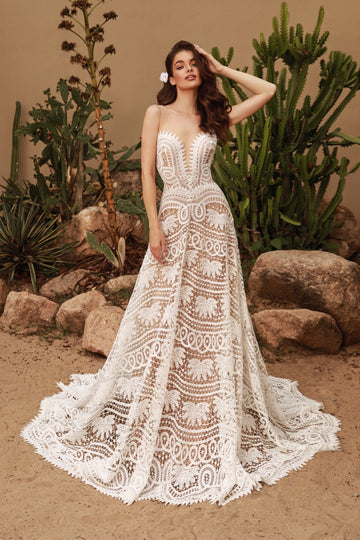Aisle-Worthy Train Designs: Revolutionizing Travel with Innovative Concepts
Aisle-Worthy Train Designs: Revolutionizing Travel with Innovative Concepts
When it comes to train travel, aesthetics and functionality play pivotal roles in user experience. The concept of "aisle-worthy train designs" represents a new trend in the transportation industry that emphasizes not only the practicality of trains but also their visual appeal and comfort. This article will delve deep into the innovative designs making waves in railway travel, the importance of aesthetics in train design, and how these transformations are shaping the future of public transportation.
Understanding Aisle-Worthy Train Designs
Aisle-worthy train designs refer to innovations in train interiors and exteriors that enhance passenger comfort, safety, and visual pleasure. These designs are characterized by spacious aisles, modern seating arrangements, abundant natural light, and the thoughtful incorporation of technology to improve the overall travel experience. But why is this concept gaining traction?
The Importance of Aisle-Worthy Designs
Modern passengers have heightened expectations for their travel experiences. Gone are the days when travelers settled for cramped seating and poor amenities. In today’s fast-paced world, aesthetic and functional designs have become essential priorities. Here are a few reasons why aisle-worthy train designs are crucial:
- Enhanced Passenger Comfort: Spacious aisles and ergonomic seating help reduce fatigue during long journeys.
- Safety and Accessibility: Designs that cater to accessibility contribute to a safer environment for all travelers.
- Sustainability: Incorporating eco-friendly materials and energy-efficient technologies demonstrates a commitment to environmental responsibility.
- Visual Appeal: Attractive designs not only create a pleasant atmosphere but also improve the image of rail travel.
Key Features of Aisle-Worthy Train Designs
Now that we understand the significance of aisle-worthy train designs, let’s explore the key features that characterize these innovations. The following table summarizes the essential elements:
| Feature | Description |
| Spacious Aisles | Wider walkways facilitate passenger movement and enhance comfort. |
| Ergonomic Seating | Designed for maximum comfort during long journeys. |
| Natural Light | Large windows and skylights improve the ambiance and reduce the feeling of confinement. |
| Smart Technology | Integrated digital displays and charging ports enhance connectivity. |
| Eco-Friendly Materials | Use of sustainable materials showcases a commitment to environmental principles. |
Recent Innovations in Train Designs
Recent innovations in aisle-worthy train designs showcase creativity, technology, and forward-thinking. Below are a few groundbreaking concepts that have caught public attention:
- The Bullet Train Experience: High-speed trains like Japan's Shinkansen combine sleek designs with safety and efficiency. Passengers can expect wide aisles and luxurious seating options.
- The Travelator Train: An emerging concept featuring moving walkways within the train to ease passenger movement, especially during peak times.
- Green Trains: Trains designed with eco-friendly technologies such as solar panels, electric propulsion systems, and sustainable materials are gaining traction in Europe.

Case Studies: Leading Train Operators Embracing Innovative Designs
Numerous train operators across the globe are embracing aisle-worthy designs, creating a paradigm shift in how we perceive train travel. Here are a few notable examples:
The Eurostar Experience
Eurostar trains, which connect the UK with mainland Europe, have made significant innovations in their design. With spacious business lounges, individual charging points, and advanced onboard technology, the Eurostar continues to set industry standards.
Indian Railways’ Luxury Trains
India's Railways has introduced luxury trains like the Maharajas' Express, which focuses on opulence. These trains feature wide aisles, plush interiors, and fine dining experiences, demonstrating that comfort and style can coexist in train travel.
Amtrak's Vision for the Future
In the United States, Amtrak is redesigning its long-distance fleet focusing on sustainability and passenger experience. Upcoming train models will feature spacious seating, eco-friendly materials, and improved on-board services, making train travel a more appealing option for domestic travelers.
Challenges in Implementing Aisle-Worthy Train Designs
While the idea of aisle-worthy train designs is exciting, there are challenges involved in implementing these concepts:
- Budget Constraints: Upgrading existing trains can be prohibitively expensive for certain operators.
- Regulatory Hurdles: Compliance with safety regulations can limit design innovations.
- Cultural Expectations: Different regions have varying passenger expectations, making it crucial to customize designs accordingly.
The Future of Aisle-Worthy Train Designs
The future of aisle-worthy train designs looks promising. With technological advancements, growing environmental awareness, and a shift in consumer expectations, we can anticipate that train travel will become more comfortable, convenient, and luxurious. Innovations in artificial intelligence, digitization, and smart materials will allow for even more tailored experiences for passengers.
Final Thoughts: Recommendations and Considerations
As the railway industry evolves, the focus on aisle-worthy designs is not merely a trend but a necessity. Passengers deserve spaces that prioritize comfort, safety, and aesthetics. Here are some recommendations for stakeholders in the railway industry:
- Invest in Passenger Feedback: Actively seek feedback from travelers to continually improve designs and services.
- Embrace Sustainability: Prioritize eco-friendly materials and energy-efficient technologies in future designs.
- Innovate Continuously: Stay updated with global trends and embrace innovative designs that enhance the travel experience.
In conclusion, aisle-worthy train designs represent the intersection of functionality and beauty in the transportation sector. As consumer expectations evolve, so must the designs of our trains. By prioritizing passenger comfort, safety, and environmental responsibility, the future of rail travel can be as bright as the designs we create.
